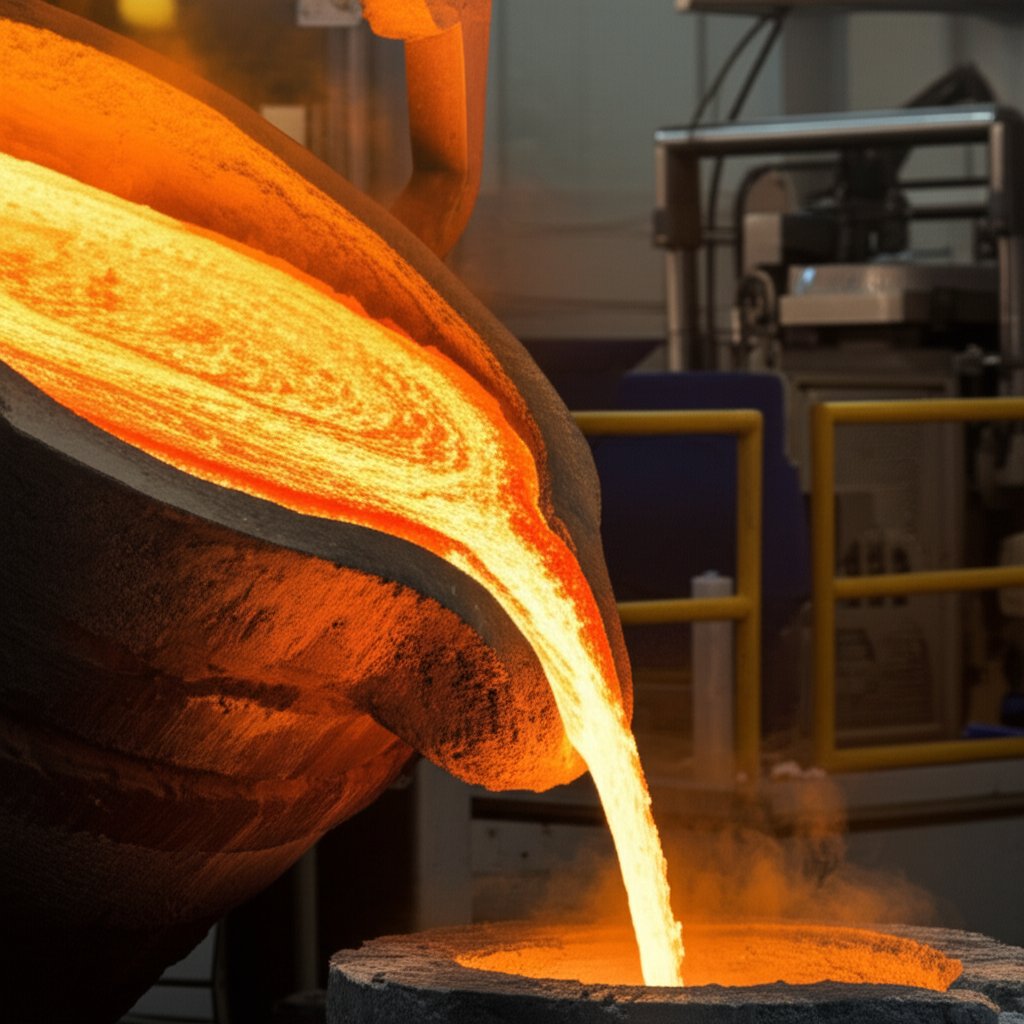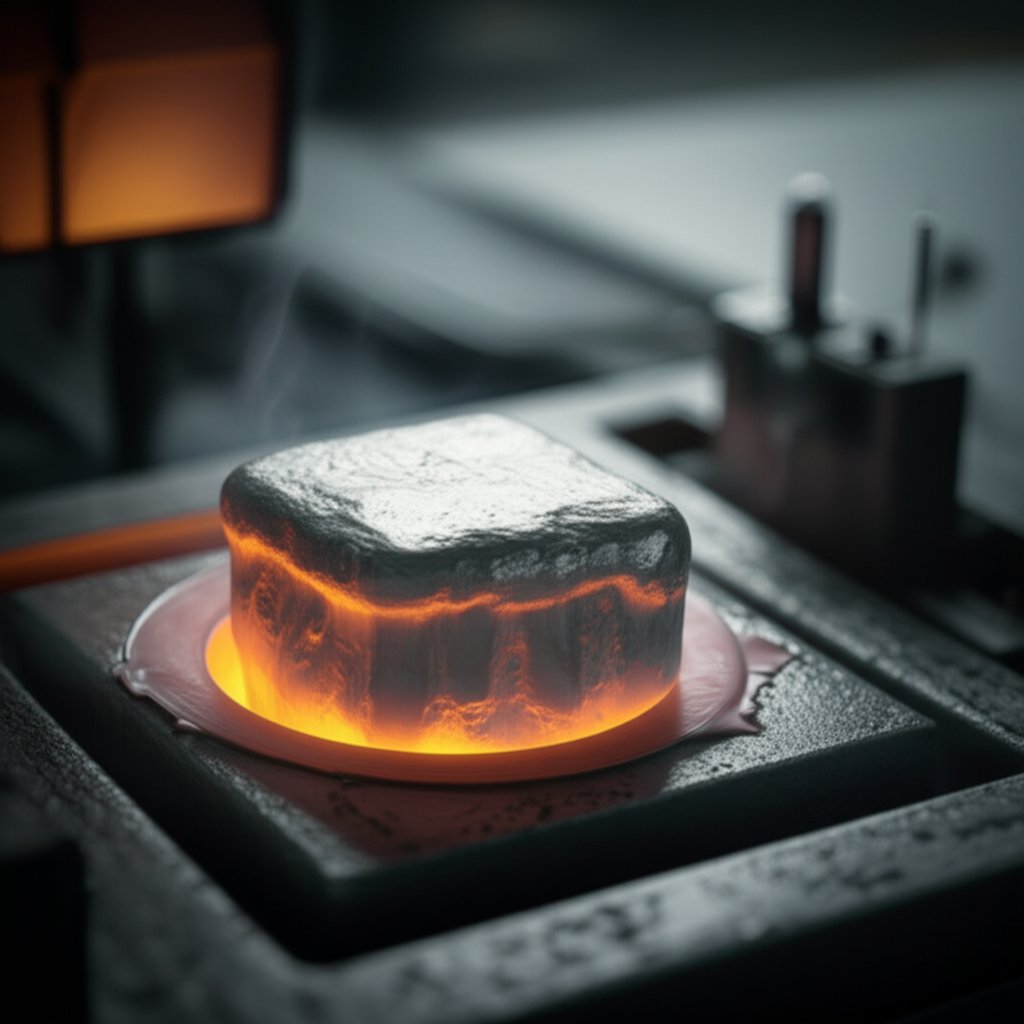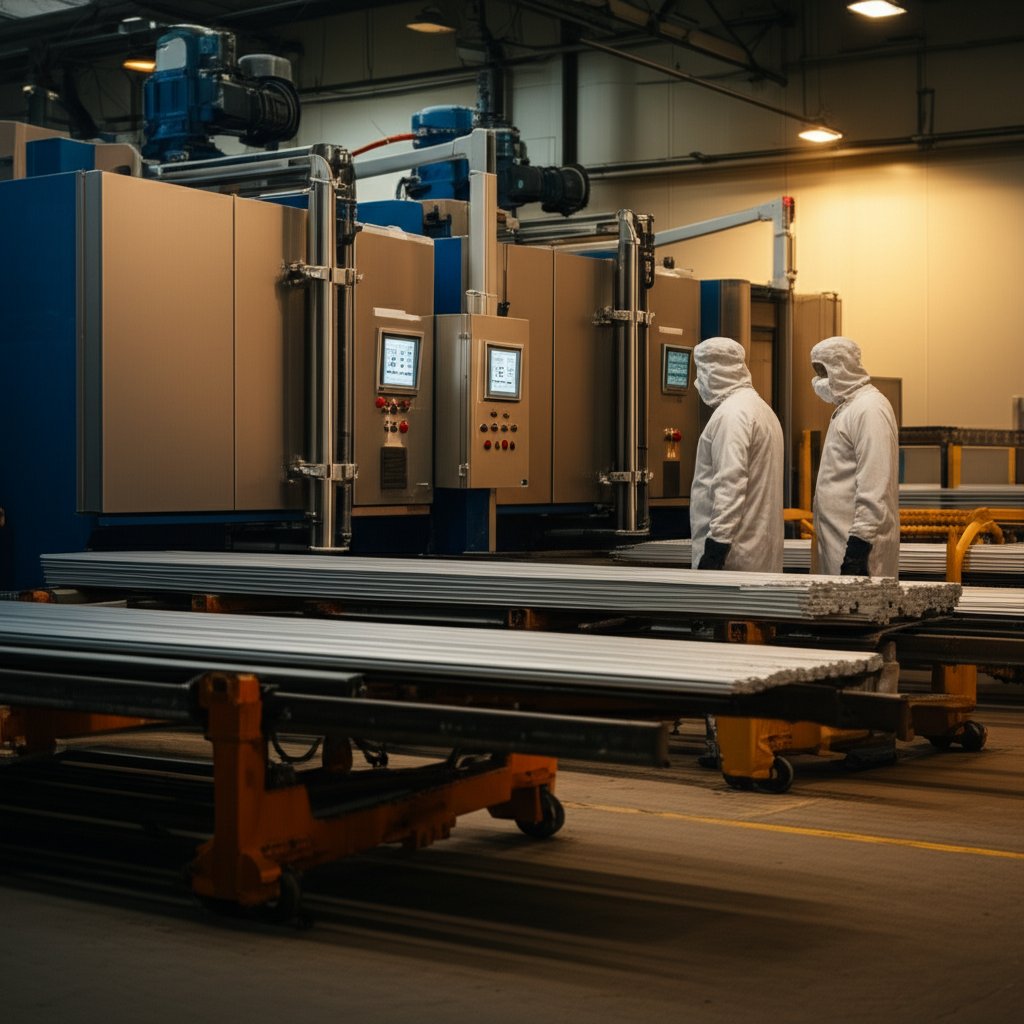
Have you ever wondered why certain metals are chosen for specific products or why some materials perform better under heat than others? The answer often starts with a fundamental property called the melting point. In material science, the melting point is the temperature at which a solid turns into a liquid. It might sound like a simple concept, but this single number can tell you a lot about how a material will behave in real-world conditions.
So, what is the melting point for aluminum, and why does it matter? When you heat a metal, its temperature rises until it reaches a point where the solid structure breaks down, and it transitions to a liquid. For pure substances like elemental aluminum, this change happens at a precise temperature, making the melting point a reliable way to identify and characterize materials. In fact, scientists and engineers use the melting point to:
Aluminum stands out as one of the most versatile metals in modern industry. You’ll notice its presence everywhere—from beverage cans and kitchen cookware to airplane bodies and building facades. Why is aluminum so popular? It’s lightweight, corrosion-resistant, and easy to shape, making it an ideal choice for countless applications. But its usefulness also depends on understanding its melting point and how this property affects performance during fabrication and use.
In this article, we’ll answer the key question: what is the melting point for aluminum? We’ll also explore what influences this critical temperature, how it impacts manufacturing and recycling, and why it’s so important for engineers, designers, and manufacturers. And you can also read another related blog post from Shengxin Aluminum, which can give you a more comprehensive understanding of this knowledge. By the end, you’ll have a clear grasp of the aluminum melting point significance and how it shapes the world around us. Ready to dive in? Let’s get started.

When you picture aluminum—maybe as a soda can or a lightweight bike frame—you might not think about what happens when it’s exposed to extreme heat. Yet, understanding the melting point of pure aluminum is essential for anyone working with this versatile metal. So, what is this critical temperature?
Pure aluminum melts at a precise temperature of 660.3°C (1220.5°F). At this point, aluminum transitions from a solid to a liquid state. This distinct temperature is a key identifier for pure aluminum and is used as a reference in both scientific and industrial settings. Imagine heating a block of pure aluminum: as the temperature climbs, it remains solid until it hits exactly 660.3°C—then, almost like flipping a switch, it begins to liquefy.
It’s important to note that this value applies only to pure aluminum. In real-world applications, aluminum is often combined with other elements to create alloys, or it may contain trace impurities. These additions can shift the melting temperature, sometimes lowering it and sometimes creating a melting range rather than a single point. For example, certain aluminum alloys begin to soften and melt at temperatures well below 660.3°C, depending on their composition.
Understanding the exact melting point of pure aluminum is the foundation for exploring how alloys, impurities, and other factors influence its behavior—a topic we’ll dive into next.

Ever wondered why one piece of aluminum melts faster than another, or why different aluminum products behave differently under heat? The answer often lies in the complex interplay of factors that influence aluminum’s melting behavior. When you’re working with aluminum—whether in manufacturing, fabrication, or design—understanding these factors affecting aluminum melting point is essential for achieving the results you want.
Let’s break down the three main factors that impact the aluminum alloy melting point and the melting point of pure aluminum:
Aluminum rarely exists in its pure form in everyday products. Instead, it’s often combined with other elements to create alloys, each with its own unique melting behavior. Imagine you’re making a custom recipe: adding a pinch of copper or a dash of magnesium can dramatically change the way aluminum melts and solidifies.
These examples show why there’s no single aluminum alloy melting point—each alloy’s composition creates its own melting range, which is crucial for selecting the right material for a given process or product.
Think of purity as the difference between distilled water and tap water. The purer the aluminum, the more predictable and higher its melting point. Here’s how purity comes into play:
For engineers and fabricators, knowing the purity of the aluminum you’re working with is key to precise temperature control during melting, casting, or joining processes.
While not something you’ll encounter in most day-to-day manufacturing, pressure can also influence the melting point of aluminum:
These effects are minor under normal atmospheric conditions but can become significant in specialized industrial or scientific settings, such as high-pressure casting or vacuum processing.
Key takeaway: The melting point of aluminum isn’t a fixed number for every product. It’s shaped by alloy composition, purity, and—occasionally—pressure. Understanding these factors helps you choose the right aluminum for your project and ensures quality results in manufacturing and fabrication.
Next, we’ll explore why knowing these melting point variations matters so much during actual manufacturing processes and how this knowledge translates into better, more reliable aluminum products.
When you walk through a city filled with gleaming skyscrapers, or when you open a lightweight laptop, you’re seeing the results of precise engineering—much of it made possible by a deep understanding of aluminum’s melting point. But why does this number matter so much in the real world of manufacturing?
Imagine you’re running a factory that turns raw aluminum into complex window frames or automotive parts. If you don’t know the exact temperature at which your aluminum melts, you risk wasting energy, damaging equipment, or producing products with hidden flaws. This is also mentioned in this blog post. That’s why the aluminum melting point in manufacturing isn’t just a trivia fact—it’s a foundation for quality and efficiency.
Sounds complex? It is—but with the right technology and expertise, manufacturers can achieve remarkable consistency. For example, in aluminum extrusion, billet temperature at the press entry is a critical control point. If it’s too high, you risk surface defects; too low, and material can stick or even damage the die. Advanced temperature measurement tools, like multi-wavelength pyrometers, are now used to monitor and adjust temperatures in real time, ensuring every profile meets strict quality standards.
Consider the production of advanced aluminum profiles for windows, doors, and curtain walls. Companies like Shengxin Aluminum leverage deep expertise in melting point science and temperature control to deliver products that meet both aesthetic and structural demands. By mastering the nuances of alloy melting behavior, they create profiles that are strong, lightweight, and precisely engineered for each application—whether it’s a high-rise facade or a custom industrial component.
Key takeaway: Mastery of aluminum’s melting point and temperature control isn’t just for scientists—it’s essential for anyone who wants to produce reliable, high-quality aluminum products. From casting and welding to recycling and architectural design, this knowledge drives innovation and efficiency across industries.
Next, we’ll see how aluminum’s melting point compares to other common metals—and why this comparison matters when choosing materials for your next project.
When choosing a metal for a specific application, understanding how it behaves under heat is crucial. Have you ever wondered why some metals are easier to melt, cast, or recycle than others? The answer often lies in their melting points. Let’s take a closer look at how aluminum stacks up against other widely used metals like steel, copper, lead, tin, and zinc. This metal melting point comparison helps highlight what makes aluminum unique—and why it’s so popular in modern industry.
Imagine you’re designing an automotive part, a window frame, or even a kitchen utensil. The melting point of your chosen metal will affect everything from energy costs to manufacturing methods. Here’s a quick reference table showing the melting points of aluminum and several other frequently used metals:
| Metal | Melting Point (°C) | Melting Point (°F) |
|---|---|---|
| Aluminum (Pure) | 660 | 1220 |
| Steel (Carbon Steel) | 1371–1593 | 2500–2900 |
| Stainless Steel | 1510 | 2750 |
| Copper | 1084 | 1983 |
| Lead | 328 | 621 |
| Tin | 232 | 449 |
| Zinc | 420 | 787 |
By comparing these values, you’ll notice that aluminum occupies a sweet spot: it’s easier to melt than steel or copper, but more robust than lead, tin, or zinc. This balance is one reason aluminum is so widely used for casting, extrusion, and recycling. In the next section, we’ll see how this relatively low melting point also impacts heat treatment and working processes for aluminum-based products.

When you’re designing or manufacturing with aluminum, it’s not just about knowing what is the melting point for aluminum—it’s about understanding how heat affects the metal long before it reaches that point. Have you ever wondered why some aluminum parts are stronger, more durable, or better insulated than others? The answer often lies in how the metal is treated at high temperatures, even below its melting point.
Heat treatment is a controlled process that changes the internal structure of aluminum alloys, enhancing properties like strength, hardness, and resistance to wear. The most common heat treatment processes include:
Let’s break down how these steps relate to the aluminum heat treatment temperature and why precise control is essential:
Sounds complex? Here’s why it matters: even temperatures well below aluminum’s melting point can dramatically change its mechanical properties. For example, exposure to elevated temperatures (like 350°F/177°C) for extended periods can reduce yield strength, hardness, and fatigue life—especially in high-strength alloys such as 7050-T7451. In aerospace-grade aluminum, just one hour at this temperature can lower yield strength by over 5%, and after eight hours, the reduction can approach 19%.
Ever touched a window frame in winter and felt the cold seep through? That’s where thermal break aluminum profiles come in. These profiles feature a non-metallic barrier—often polyamide or polyurethane—inserted between two aluminum sections. This design greatly reduces heat transfer, improving energy efficiency by 30–40% and enhancing sound insulation by up to 50 dB. The manufacturing process for these profiles involves precise heat treatments and careful assembly to ensure the barrier and aluminum remain tightly bonded and stable under temperature fluctuations.
Manufacturing high-performance products like thermal break profiles and industrial components requires not just state-of-the-art equipment, but also deep expertise in heat treatment science and aluminum alloy behavior. Companies such as Shengxin Aluminum leverage advanced thermal processing lines and strict temperature controls to produce profiles that meet demanding standards for strength, insulation, and durability. Their experience ensures that every product maintains optimal mechanical properties—even after exposure to challenging temperatures during fabrication or in end use.
Key takeaway: Working with aluminum at elevated temperatures is a science of precision. Understanding the impact of heat treatment and controlling aluminum heat treatment temperature ensures products like thermal break aluminum profiles deliver top-tier performance—whether in buildings, vehicles, or industrial systems.
Next, let’s see how aluminum’s lower melting point plays a key role in making recycling more energy-efficient and sustainable compared to other metals.
Have you ever wondered why aluminum is hailed as a champion of sustainability? The answer lies in its unique properties, especially its relatively low melting point. But how does this temperature make such a big difference in recycling, energy savings, and environmental impact?
Imagine you’re running a recycling facility. The lower the temperature needed to melt a metal, the less energy you’ll consume during the recycling process. For aluminum, this is a game-changer. Compared to metals like steel or copper, aluminum requires much less heat to transition from solid scrap to molten metal ready for reuse. This efficiency translates directly into aluminum recycling energy savings—and the numbers are impressive:
So, every time aluminum is recycled, the energy and environmental savings add up—making it one of the most sustainable metals in use today.
Unlike many materials that degrade during recycling, aluminum can be melted and reformed repeatedly without losing its original properties. This means a beverage can, a car part, or a window frame can be recycled into a new product over and over—without any drop in quality or strength. In fact, about 75% of all aluminum ever produced is still in use today, circulating through the economy instead of filling up landfills.
Key takeaway: Aluminum’s relatively low melting point is a cornerstone of its sustainability. It enables dramatic energy savings, reduces emissions, and allows for endless recycling without loss of quality—making aluminum a true leader in the circular economy.
Next, we’ll recap the essential lessons about aluminum’s melting point and its wide-reaching impact, and point you toward expert partners for advanced aluminum solutions.
When you step back and look at the big picture, it’s clear that understanding the melting point of aluminum isn’t just a detail for scientists—it’s a cornerstone for anyone working with this remarkable metal. So, why does this temperature matter so much, and how does it shape the choices of engineers, manufacturers, and designers every day?
Imagine designing a new lightweight car part, or specifying curtain wall profiles for a high-rise. If you understand the importance of aluminum melting point, you’ll choose the right alloy, set the correct processing temperatures, and avoid costly defects or safety issues. This knowledge empowers you to:
Of course, mastering all the nuances of aluminum’s melting behavior can be challenging. That’s where working with an experienced aluminum profile manufacturer makes a world of difference. Companies like Shengxin Aluminum combine deep material expertise with advanced production capabilities to deliver solutions tailored to your project’s needs—from energy-saving window frames to high-performance industrial components. Their understanding of alloy selection, process control, and quality assurance ensures your products perform reliably, every time.
Key takeaway: The melting point of aluminum is more than a number—it’s a fundamental property that underpins innovation, efficiency, and sustainability across industries. By understanding and leveraging this knowledge, you’re set to make smarter decisions and achieve better results in every aluminum project.
Ready to take your next project to the next level? Consider partnering with a trusted expert like Shengxin Aluminum for advanced aluminum profiles and solutions that demand the highest standards of quality and technical know-how.
Pure aluminum melts at 660.3°C (1220.5°F), marking the temperature where it transitions from solid to liquid. This value is crucial for manufacturing and processing aluminum products efficiently.
Adding elements like copper, magnesium, silicon, or zinc creates aluminum alloys with altered melting points. These changes allow for tailored properties, making aluminum suitable for a wide range of applications.
Accurate knowledge of the melting point ensures precise temperature control during casting, welding, extrusion, and recycling, resulting in high-quality, defect-free aluminum products.
Aluminum melts at a lower temperature than steel and copper but higher than lead, tin, and zinc, making it energy-efficient for manufacturing and recycling while offering robust performance.
Aluminum's relatively low melting point reduces energy consumption during recycling, enabling repeated reuse without quality loss and supporting sustainable manufacturing practices.
 serviço on-line
serviço on-line 0086 136 3563 2360
0086 136 3563 2360 sales@sxalu.com
sales@sxalu.com +86 136 3563 2360
+86 136 3563 2360